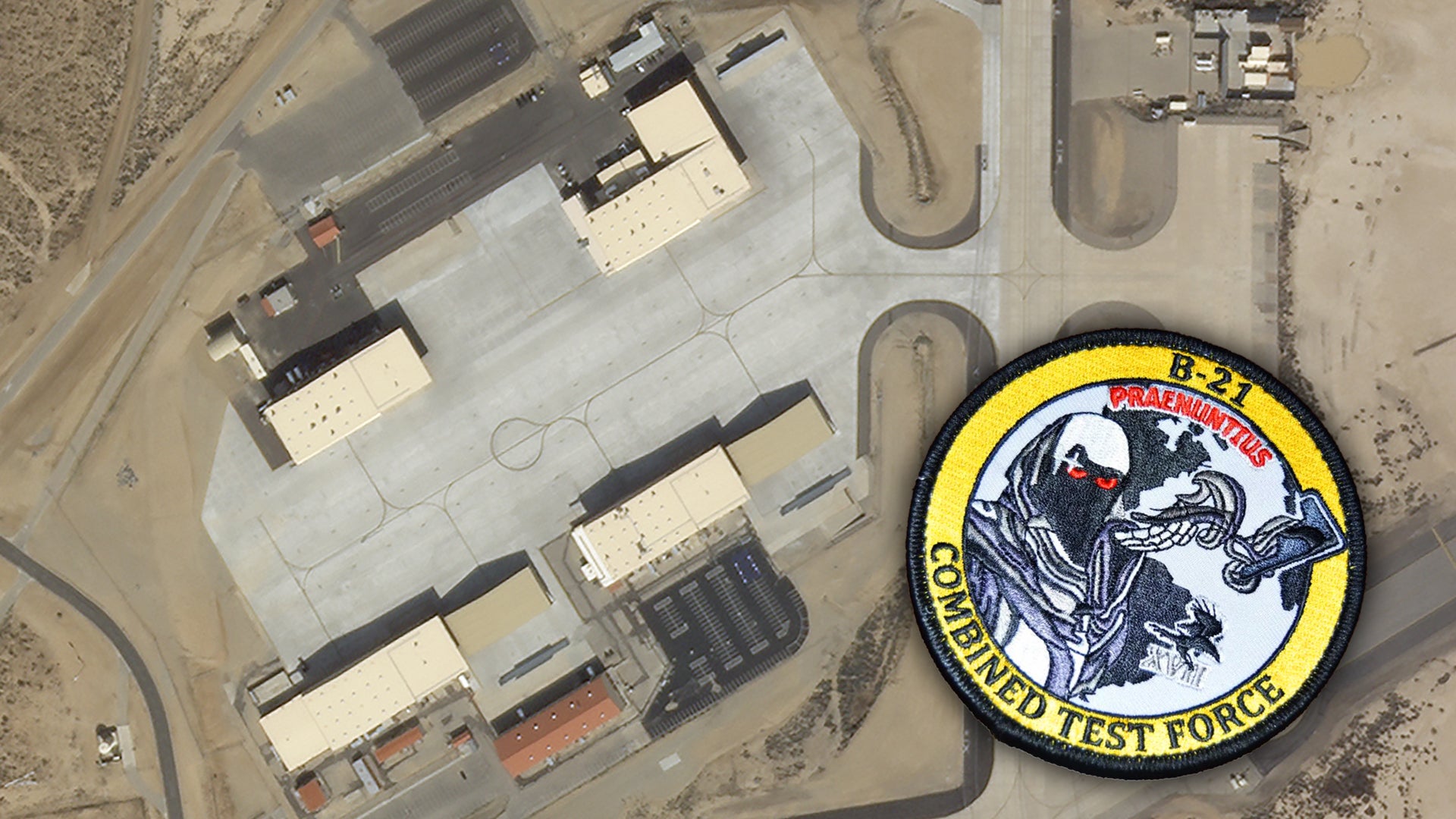Historic Edwards Air Force Base, the center of the flight test world, has been going through a series of changes in preparation to receive the B-21 Raider stealth bomber. Now, satellite imagery shows that the area of the base where the B-21 test program was thought to be headed may not actually be its destination. As a result, it would seem that more than just one secretive large aircraft program may kickoff at the base in the not so distant future, or may even be underway there already.
For years, the remote South Base complex at the sprawling test base was thought to be the place where the B-21’s flight testing would occur. The other bomber test forces, aside from the B-2 test force, were moved from South Base to the base’s main ramp years ago in preparation for new shadowy developments at South Base, which were thought to be at least primarily related to the new bomber. But satellite images point to the possibility that the B-21 test program may actually be housed in a remodeled complex located in the central part of the base, not South Base. This, in turn, points to the real possibility that South Base will house other sensitive large aircraft programs, and may be doing so already.
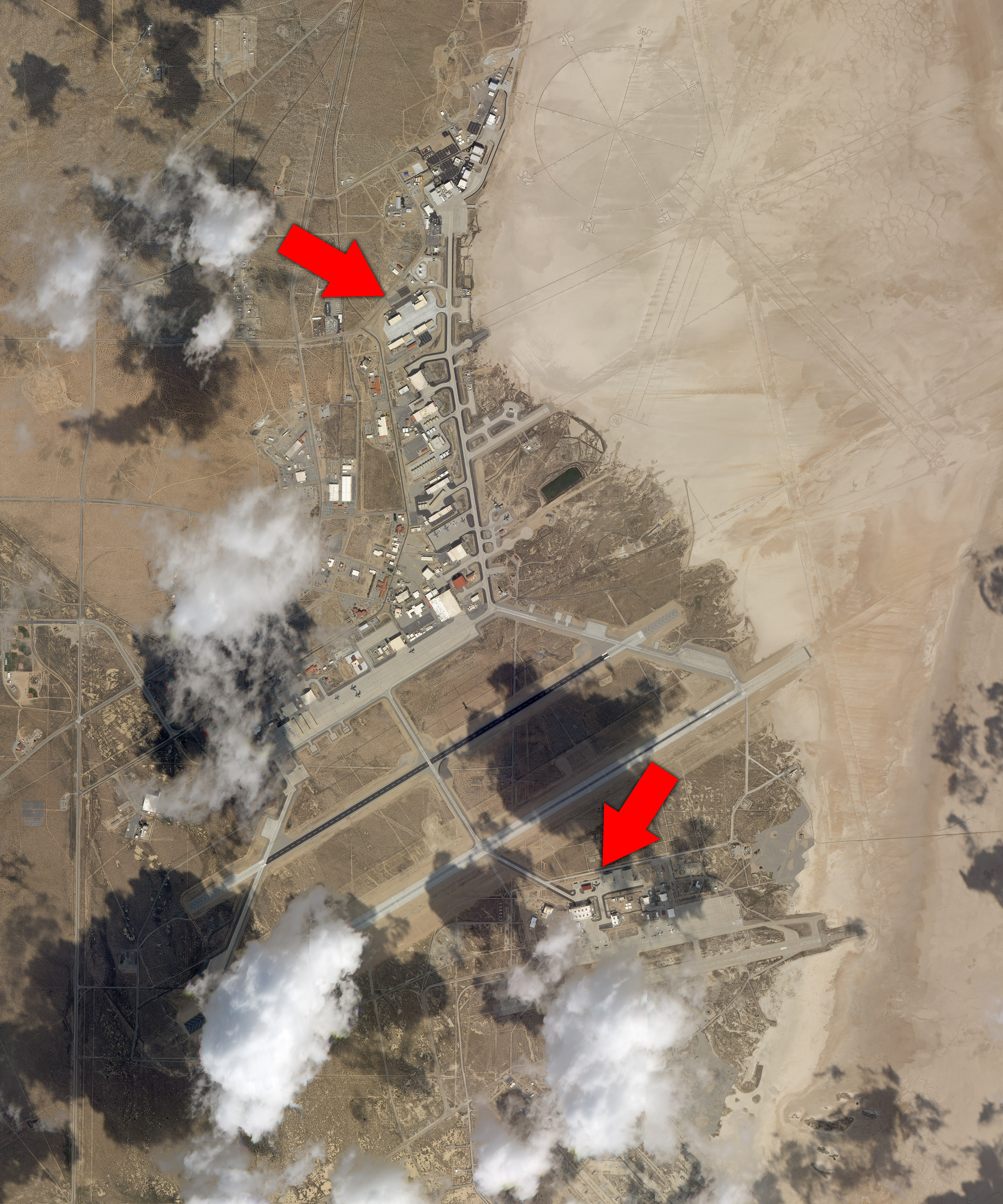
Since around 2011, South Base, where the Air Force’s bomber test force once called home, as did the YAL-1 Airborne Laser program, and more, was the presumptive residence for the future B-21 test program. The place was largely cleared out to undergo renovations and repurposing for a new, undisclosed mission. With the B-2 test program still colocated there in its own custom-built hangar, the avalanche of rumors and off-the-record statements about how the B-21 program would bed-down there made total sense.
Adding evidence to this supposed eventuality, recently, large hangar structures were constructed on the apron areas where the bombers were traditionally parked. Nearly a year ago, The War Zone
detailed these improvements, which seemed ideally suited for the new stealth bomber. The new additions included one elongated red shelter ideally suited for a stealthy flying-wing and a large hangar that could feasibly conceal at least two of the new bombers at once.
These new facilities are in addition to the huge hangar that once housed the airborne laser program. And when we say huge, we mean huge. This hangar is roughly 500 feet long by 300 feet deep and very tall. It could conceal a number of programs of any size at one time.

Since that report, another of these large flight line area hangars has been erected. As a result, South Base’s apron has been transformed into an area that can easily stow its largest occupants out of the elements and out of sight.

The addition of these new hangar facilities only solidified the idea that the B-21 test program would materialize at South Base fairly soon. But upon close examination of satellite imagery, it becomes apparent that another facility, located in the central base area, between the main ramp and NASA’s Armstrong Flight Research Center, has undergone major changes that seem to make it tailor-made to support the B-21 program.
At first glance, the changes aren’t hugely apparent as the general layout of the facility has remained the same as it has been for years, but when one looks closer, changes do materialize, and they are significant in nature. The facility has been totally renovated, morphing from an area that was largely equipped to support tactical fighter aircraft programs, namely the F-22 Raptor, to one that is purpose-built to accommodate a test force of large flying wing aircraft.
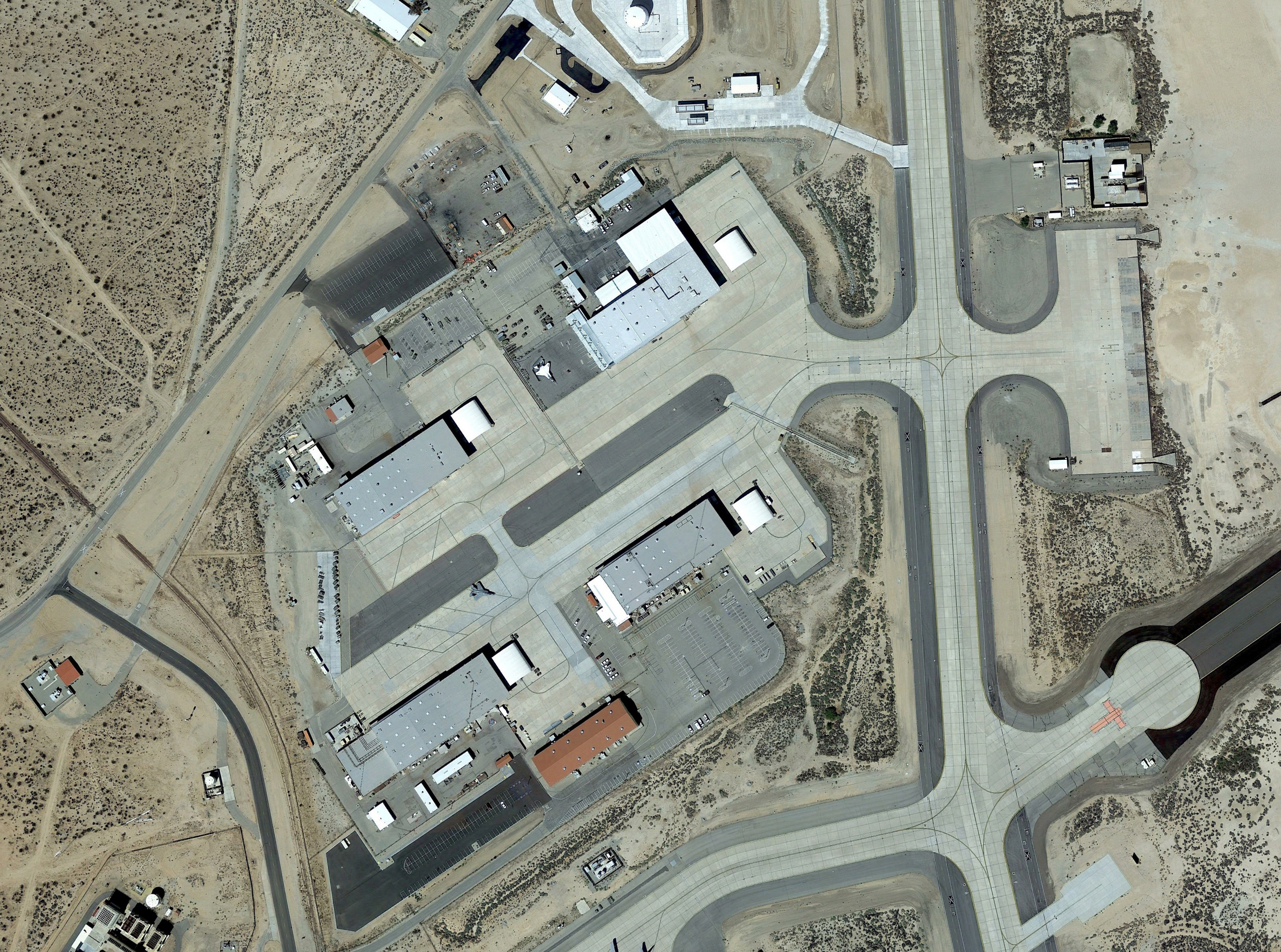
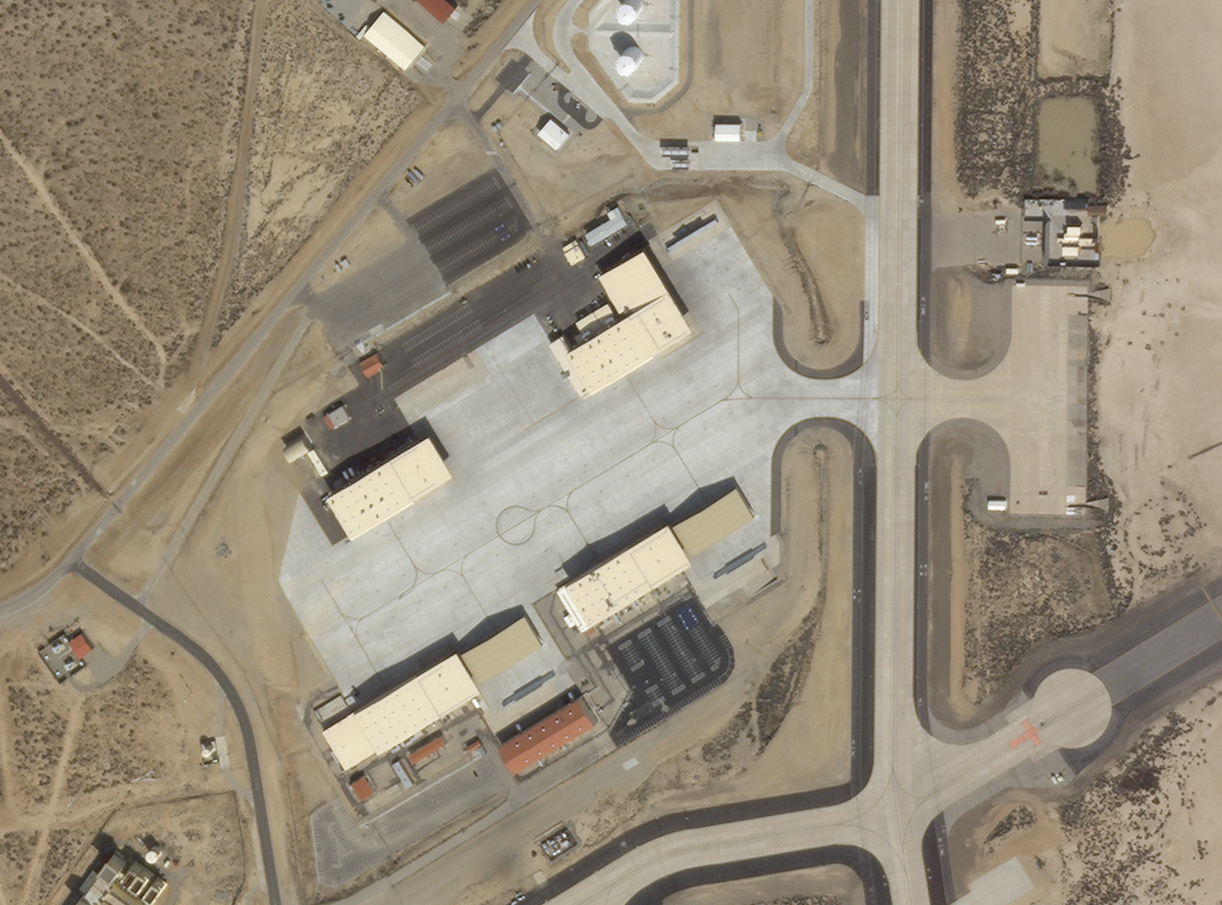
The four near-identical hangars with 180-foot-wide spans have been fully renovated and altered similarly. Each has large work and maintenance areas attached to them that would be necessary to support a complex program like the B-21. This aircraft will have a smaller wingspan than its predecessor, the B-2A Spirit, which measures in at 169 feet. The B-2’s test fleet was made up of six airframes. It is thought the B-21’s test fleet will be four to six aircraft in size.
The ramp area of the complex was totally jackhammered up and rebuilt starting in January of 2018, changing it from one bisected for fighter-sized aircraft to an expansive continuous operating area for far larger aircraft.
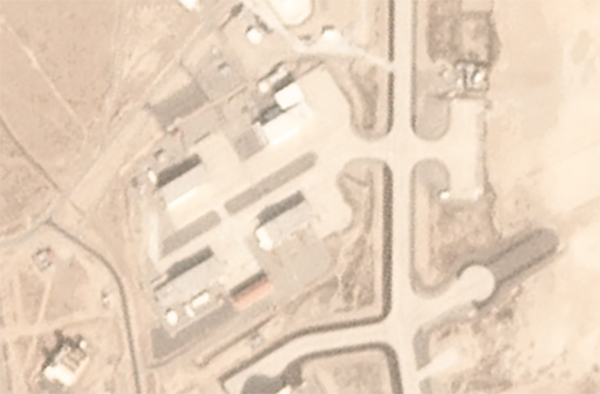
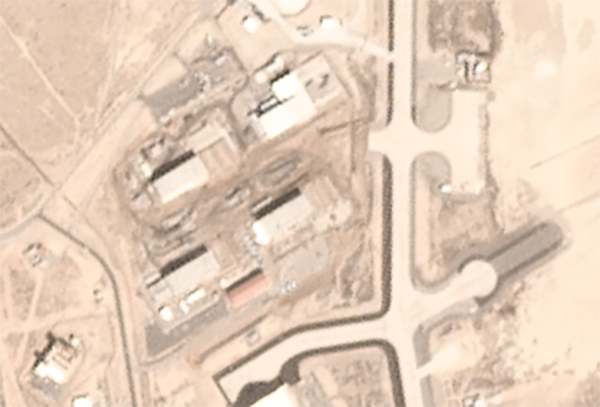
Today, the apron is replete with taxi lines that indicate the four hangars and exterior parking areas are designed to accommodate one large aircraft each, not a number of individual fighters. A pair of sunshade shelters sit beside two of the hangars. They are long, low-slung, continuous span, 180-foot-wide structures. Each is equipped with a wide jet blast deflector, which would allow the aircraft sitting in front of them to run their engines without disturbing what lies beyond the fenceline. An open parking spot area on the ramp also has an identical jet blest deflector, but no sunshade.
Overall, this revamped area seems ideally suited for what we know about the B-21 and its looming test program. There are no other large, unclassified aircraft that would require such a unique facility. The fact that it is located in the central base area would be a welcome development for those working on the program as the location is more convenient than South Base.
As for the operational state of this intriguing complex, at this point, it isn’t fully open for business yet. An additional parking lot was just recently laid down and there appears to be no day-to-day activity at the facility of any significant scale, which fits well with the B-21’s timeline as we understand it. The stealth bomber could take its first flight as early as next year, that is if everything goes as planned.

So, if this is where the B-21 test force will reside, what is going on at South Base? It’s possible that some of the Air Force’s other bomber operations have moved back there, but how that would necessitate the new hangars and the elongated shelter isn’t clear. Beyond that, the occupant of the huge South Base hangar remains unknown. One real possibility is the Air Force’s all but disclosed, but still secret RQ-180 high-altitude, long-endurance (HALE) stealth drone. The clandestine unmanned system, which you can read more about here, here, and here, supposedly has moved into a semi-operational state. It would likely work with the B-21, B-2, any potential unmanned combat air vehicle (UCAV) in development, and other deep penetrating aerial assets during a conflict, so migrating it from Area 51 to Edwards seems logical, especially as its fleet size expands.
The reality is that the RQ-180 is another candidate for the revamped mysterious facility in the main base area, as well. The flying-wing design could take advantage of the same features, like B-21. It is more likely that such a high-profile program like the B-21 would have such a facility fabricated for it, and everything else lines up, but the RQ-180 being a tenant of the cental base area complex is still possible. We will publish our feature on the RQ-180, which will delve into the issues surrounding it, including basing, in the near future, so stay tuned for that.
With all this in mind, South Base could be used as a ‘gray area’ for supporting a number of cutting-edge flight test and weapons development programs, some of which could potentially work together as a family of systems. From emerging hypersonic systems, including those lugged aloft aboard B-52s, to advanced unmanned combat aircraft to the RQ-180 drone could all call South Base home as they emerge out of the deeply classified realm. They would make up an ecosystem of systems that are designed to cooperatively pierce the enemy’s anti-access umbrella. As such, they could be tested together out of South Base as they mature towards an operational state.
We will have to see how this all pans out in the months and years to come, but as it sits now, the B-21 program is most likely not going to be based primarily where many thought it would be originally. As a result, it may not be the most secretive major aircraft program to call Edwards Air Force Base home, either now or in the not so distant future.
Contact the author: Tyler@thedrive.com
